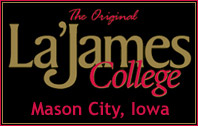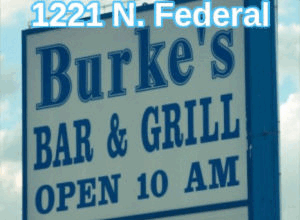By Dan Pompei, Chicago Tribune –
This is a deep group of wide receivers. There are considerably more draftable players than at any other position. As a result, the order in which they are taken will depend as much on scheme fit as anything else. Many of the down-the-line prospects lack size and might not appeal to many teams.
The best
1. Justin Blackmon, Oklahoma State, 6-1, 207. He has size, speed and athleticism and shows excellent strength and body control, allowing him to play bigger than he is. Blackmon runs good routes and knows how to shake a defender. He is a fluid player who can make sharp cuts. His ball skills are excellent. He does not have elite breakaway speed, however. Many scouts rate him below A.J. Green and Julio Jones, the top receivers in the 2011 draft.
2. Michael Floyd, Notre Dame, 6-2, 220. This is a big, physical receiver with excellent body control and ball skills. He uses his size to compete for the ball. He is not a burner and his separation skills are average, but he has good enough play speed. Floyd is effective after the catch. He would be ideal in a West Coast offense. He has had multiple run-ins dealing with alcohol, but some teams see him as a good kid who made some immature decisions. He was a four-year producer at Notre Dame.
3. Kendall Wright, Baylor, 5-10, 196. He ran a 4.42 40-yard dash at his pro day after a poor combine workout had his stock on the decline. Regardless of his timed speed, Wright plays fast. He is an explosive receiver with impressive ball skills. He makes wow plays. Wright isn’t the biggest receiver, but he is tough and makes plays all over the field. He could develop into the best slot receiver in the draft. Wright put up outstanding numbers for four years. He improved his route running in 2011 and could improve more. He is comparable to Santonio Holmes.
4. Stephen Hill, Georgia Tech, 6-4, 215. Hill is one of the biggest boom-or-bust prospects in the draft. He has the potential to be the best receiver and one of the best players at any position. He has size, blazing speed (he ran a 4.28 40 at the combine), leaping ability (39½-inch vertical) and a flair for the circus catch. However, he is very unrefined and has not played in a pro-style offense. There is not much evidence on tape of him running difficult routes and cutting and separating. He seems to be a little slow getting in and out of breaks. And his hands can be inconsistent. He was not a big producer in college as a result of the offense he played in. Hill came out of school early and has a lot to learn. Some scouts question how competitive he is, but he has been a very good run blocker.
5. Rueben Randle, LSU, 6-3, 210. His combination of size and speed is enticing. Randle runs routes nimbly for his size and catches the ball well. He does not have unusual burst; rather, he is a player who builds speed. He left school early and is a bit raw in terms of developing the finer points of the game. Randle could play with more urgency. He is a willing blocker. His best football could be ahead of him.
6. Chris Givens, Wake Forest, 5-11, 198. This is a speed receiver who can separate and run away from defenders after the catch. The former track star also accelerates quickly in routes. He isn’t the biggest receiver, but he isn’t small. Givens has very good hands. After coming out early, he has a lot to learn in terms of route running. He can play inside or outside. He has had some serious knee injuries, but they haven’t affected his play.
7. Alshon Jeffery, South Carolina, 6-3, 216. This is a big player with the ability to adjust to the ball and present a big catching radius. Jeffery should be a fine red-zone weapon. He is a smooth runner but does not have great speed. Jeffery has been overweight at times. Some teams question his desire and maturity. He has been compared to Mike Williams, currently of the Seahawks.
8. Mohamed Sanu, Rutgers, 6-1, 211. Sanu is a strong athlete who relishes the physical part of the game, runs good routes and makes some impressive catches. He has been very productive. Lack of top speed separates him from the top receivers. Sanu is mostly perceived as a possession receiver. He has played almost exclusively from the slot. He was a high school quarterback who was used extensively in the Wildcat at Rutgers. He has top intangibles and should be a locker-room asset.
9. A.J. Jenkins, Illinois, 6-0, 190. He has come on strong in the postseason, starting with his performance in the East-West Shrine Game. Jenkins is a smooth, fast route runner who can separate. His hands are pretty good. He can make catches in tight coverage. He needs to improve his strength and play more physically. He also needs to play more consistently, as he has had some route busts. Jenkins can play in the slot or outside. His potential is very good.
10. Brian Quick, Appalachian State, 6-3, 220. Because he did not play big-time college football, Quick is a developmental prospect. But there is a lot to develop, given his size and ability. He is a strong receiver with good hands. Quick has done well in the postseason and has helped his stock. He doesn’t have much experience running pro-style pass routes. His initial explosion off the ball is so-so.
11. Juron Criner, Arizona, 6-2, 224. Criner is a big, physical receiver with soft hands. He is not the fleetest of foot, but he can gain yards after the catch. Criner can break tackles and has good running instincts. He needs to improve his route running. He has had some medical issues that teams will have to feel comfortable with.
12. T.Y. Hilton, Florida International, 5-10, 183. A speed receiver who lacks ideal size, Hilton is dangerous in space. He sees the field well and finds creases. He can make sharp cuts. He is very explosive and is one of the best return men in the draft. He has been banged up a lot but is surprisingly tough for his size. He will need to refine his technique and improve his strength.
13. Nick Toon, Wisconsin, 6-2, 217. The son of former Jet Al Toon has size and enough speed but is not a dominant player. Toon is perceived as an underachiever and a No. 2 receiver in the NFL. He is a smooth route runner with a good feel for defenses. He catches well. Toon is a physical receiver. His quickness is ordinary. He was considered a better prospect when there was talk about him entering the 2011 draft. He has had a few injury issues.
14. Greg Childs, Arkansas, 6-3, 219. He is a big, gifted player whose 2011 performance was affected by a knee injury. Childs didn’t separate and produce like he did in the past, but he has speed and leaping ability. He can make catches away from his body, so he has a big catching radius. He runs pretty good routes. Childs takes pride in his blocking. A team that selects him will be gambling he can return to pre-injury form.
15. Marvin Jones, California, 6-2, 199. Jones has very good body control and runs nice routes for a big man. He can get off the jam and separate from defenders easily. He is pretty polished and was very productive in college. He worked out well, but his play speed is only average. His hands are above average.
16. Ryan Broyles, Oklahoma, 5-10, 192. This smallish receiver is effective working from the slot. He gets in and out of breaks well and shows good suddenness. He doesn’t drop much and competes hard. Broyles was unbelievably productive, setting a major-college record with 349 career catches. He lacks top-end speed and is considered a finesse receiver. He is coming off a torn ACL that could affect his stock.
17. Keshawn Martin, Michigan State, 5-11, 188. He brings value as a slot receiver/punt returner. Martin has excellent quickness, which helps him separate on inside routes. His speed is average. He catches the ball well. It could take him some time to develop on offense.
18. Marquis Maze, Alabama, 5-8, 186. He was a fine college player who will need a specific role in the NFL. Given his lack of height and running back’s build, Maze will be best utilized in the slot. His speed is average, but he has good quickness and good hands.
19. Jarius Wright, Arkansas, 5-9, 182. Strictly a slot receiver, Wright is a shifty runner who is explosive and changes directions well. He has good hands and has been productive. He needs a lot of work on his routes. Wright has return ability.
20. Joe Adams, Arkansas, 5-11, 179. His primary value could be as a return man. He has an innate ability to make tacklers miss on punts. Adams is small but quick and tough. His speed is average. His ball skills need developing. He is probably a slot receiver only in the NFL. He helped himself at the Senior Bowl.
21. B.J. Cunningham, Michigan State, 6-1, 211. Cunningham is a gamer who can make plays. He has good size and strong hands, and he is a physical player. He lacks top-end speed and is not the quickest in and out of cuts. He has a knack for the game. He would be a good fit in a West Coast offense.
22. DeVier Posey, Ohio State, 6-1, 211. He has a nice combination of size and athleticism and catches the ball well. He has average speed and is not the most physical receiver, but he does have some ability to make plays downfield. Some compare him to former Buckeye Michael Jenkins. He was suspended for the first five games of last season for receiving improper benefits.
23. Devon Wylie, Fresno State, 5-9, 187. His quickness helps him get open on routes over the middle. Wylie excels working from the slot but does not have the size to win on the outside. He has had some durability issues. Wylie also can return punts.
24. Danny Coale, Virginia Tech, 6-0, 201. He is a very effective slot receiver who is a savvy route runner with dependable hands. He should be a solid special teams contributor. He is comparable to Austin Collie.
25. Jordan White, Western Michigan, 6-0, 208. This is a well-rounded receiver who catches everything. He is tough, smart and polished. His speed is average and he is not a top athlete. He is a poor man’s version of Greg Jennings, the Packers star who also played at Western Michigan.
26. Rishard Matthews, Nevada, 6-0, 217. He was a very productive college player who might not be as effective in the NFL. Matthews ran a 4.44 40 at his pro day but plays more like the 4.54 he ran at the combine. He is a strong, physical receiver who plays bigger than he is. He catches the ball well.
27. Jeff Fuller, Texas A&M, 6-4, 223. He is big, athletic and physical and has a lot of potential. He can snatch the ball. His hands are inconsistent, and he drops too many easy ones. He played much better in 2010 than 2011. He does not always separate well.
28. Marvin McNutt, Iowa, 6-3, 216. A possession receiver with good size, McNutt has body control and makes catches in a crowd. He is physical and tough. He will not beat many defenders on deep routes, and he will not turn many short catches into long gains. His separation skills are ordinary. He was very productive in college, but some scouts believe he has limited potential in the NFL.
29. T.J. Graham, North Carolina State, 5-11, 188. His speed has a number of teams interested. He is not the most fluid runner, however. Graham catches well and has potential. He is a little raw and needs route work. He has kick-return ability.
30. Chris Owusu, Stanford, 6-0, 196. This is a gifted receiver who had an off year. He has a history of injuries, including three documented concussions, that will affect his stock. He has fine speed (a 4.36 40 at the combine) and exceptional kick-return ability.
31. Tommy Streeter, Miami, 6-5, 219. This is a big receiver who ran a 4.37 40 at the combine. He does not play that fast, however. Streeter does not have ideal body control and is not an efficient route runner. He makes catches in traffic, but his hands are suspect. He came out early and was not a very productive player. Streeter is a similar prospect to Stephen Hill but isn’t as gifted.
32. Jeremy Ebert, Northwestern, 5-11, 200. This productive college receiver has what it takes to be a fine slot receiver in the NFL. Ebert is quick and has excellent body control. He can run routes precisely, does not drop many passes and is tough over the middle. He ran a 4.38 40 at his pro day to get the attention of scouts.
33. Eric Page, Toledo, 5-9, 186. Some teams consider him more of a return man than a receiver. Page’s lack of size limits him as a receiver, but he has the vision and quickness to bring back punts and kicks. He was a productive college player. He is tough and has good but not great speed.
34. Travis Benjamin, Miami, 5-10, 172. He’s a smaller receiver with very good speed and return ability. He ran a 4.36 40 at the combine and vertical jumped 38 inches. He was a four-year letterman and a productive college player.
35. Darius Hanks, Alabama, 5-11, 184. This is a quick receiver who has a good feel for running routes from the slot. He is a consistent player with good hands. He needs to improve his strength. He ran a 4.66 40 at the combine, and his lack of speed will hurt him in the draft.
36. Gerell Robinson, Arizona State, 6-3, 227. Robinson has an NFL body and knows how to use it on the field. He has average speed and is strictly a possession receiver. His hands can be inconsistent.
37. Dwight Jones, North Carolina, 6-3, 230. His size, production and athleticism make him worthy of consideration. Blocking is a plus. Jones is not the fastest receiver and does not always catch the ball well. His route running can be sloppy.
38. Derek Moye, Penn State, 6-4, 209. This is a tall receiver with long arms and soft hands. He comes out of his breaks well for a big receiver. He does not have breakaway speed and doesn’t give you much after the catch.
39. Tyler Shoemaker, Boise State, 6-2, 216. His size/speed combination has NFL teams giving him a good look. A former walk-on, Shoemaker lacks elite skill but tries hard. He scored 16 touchdowns last season.
40. Kashif Moore, Connecticut, 5-9, 180. An undersized slot receiver, Moore can run. He was timed at 4.42 in the 40 at the combine.
41. Junior Hemingway, Michigan, 6-1, 225. He is a big, physical receiver who is not the fastest. Hemingway was a productive player for four years.
The rest
42. Kevin Hardy, Citadel
43. LaVon Brazill, Ohio
44. Patrick Edwards, Houston
45. Aldarius Johnson, Miami
46. Tim Benford, Tennessee Tech
47. D.J. Woods, Cincinnati
48. Josh Cooper, Oklahoma State
49. Julian Talley, Massachusetts
50. Jermaine Kearse, Washington
51. Dale Moss, South Dakota State
52. Brandon Carswell, USC
53. Jerrell Jackson, Missouri
54. LaRon Byrd, Miami
55. James Rodgers, Oregon State
56. Lance Lewis, East Carolina
57. Jarrett Boykin, Virginia Tech
58. Thomas Mayo, California (Pa.)








